History
Today in History: Former Senate President Chuba Okadigbo Was Gassed To Death
History
Late Prof. Haruna Wakili: A Legacy of Scholarship, Service, and Integrity
By Dr. Yau Muhammad
Professor Haruna Wakili (1960–2020) was a distinguished Nigerian academic, historian, and public servant whose contributions to education and governance left an indelible mark on both Bayero University, Kano (BUK), and Jigawa State.
Early Life and Academic Pursuits
Born in June 1960 in Rumfa word, Hadejia, Jigawa State, Prof. Wakili began his educational journey at Government Teachers College, Dutse, obtaining his Grade II Certificate in 1980. He proceeded to Bayero University, Kano, where he earned a B.A. in History in 1985, graduating as the best student in his department and receiving the Prof. M.A. Al-Hajj Memorial Prize and the Prof. Michael Crowder Prize for excellence in modern African history. He further obtained an M.A. in History in 1989 and a Ph.D. in 1998 from the same institution. In 2004, he expanded his academic horizons by earning a certificate in American History from New York University, USA .
Academic and Administrative Roles at Bayero University
Prof. Wakili commenced his academic career at BUK in 1990 as an Assistant Lecturer in the Department of History. Over the years, he rose through the ranks, becoming a Professor and Head of the Department. He was notably the only individual to serve twice as Director of the Aminu Kano Centre for Democratic Research and Training (Mambayya House), where he spearheaded significant research initiatives and promoted democratic studies . In 2018, he was appointed Deputy Vice Chancellor (Administration), a role he held until his passing in 2020 .
Commissioner for Education in Jigawa State
Between 2010 and 2015, Prof. Wakili served as the Commissioner for Education, Science, and Technology in Jigawa State under Governor Sule Lamido’s administration. During his tenure, he was instrumental in transforming the state’s educational landscape. His notable achievements include the establishment of Sule Lamido University in Kafin-Hausa, aimed at expanding higher education access for the state’s residents . He also oversaw the construction and renovation of schools, enhancement of teacher welfare, and implementation of training programs to improve educational standards .
Scholarly Contributions and Mentorship
An accomplished historian, Prof. Wakili specialized in the study of riots, revolts, conflicts, and peace studies in Nigeria. His doctoral thesis focused on the phenomenon of riots and revolts in Kano. He authored several publications, including “Turawa A Kasar Hadejia: Karon Hadejiyawa da Turawan Mulkin Mallaka” and “Religious Pluralism and Conflict in North Western Nigeria, 1970–2000” . Known for his intellectual rigor and integrity, he emphasized original research and was a staunch advocate against plagiarism. His mentorship inspired many students to pursue academic excellence and critical thinking .
Legacy and Tributes
Prof. Wakili passed away on June 20, 2020, at the National Hospital in Abuja after a prolonged illness. His death was deeply mourned across academic and political communities. BUK’s Vice Chancellor, Prof. Muhammad Yahuza Bello, lauded him as a dedicated scholar and administrator . Former Governor Sule Lamido described him as an epitome of humility and selfless service . The Emir of Hadejia, Alhaji Adamu Abubakar Maje, remembered him as a close confidant and a man devoted to humanity .
Prof. Haruna Wakili’s life was characterized by unwavering commitment to education, scholarly excellence, and public service. His contributions continue to inspire and shape the academic and educational landscapes in Nigeria.
Allah ya jikan Mallam da rahama. Ameen thumma Ameen.
Wassalam
History
History, Identity, and the Unexpected Echoes of Ancestry”-Dokaji
By Huzaifa Dokaji
About 2 years ago, a good friend of mine who works and lives in the UK engaged me in a conversation about the history of Northern Nigeria. The discussion moved from topic to topic until we ventured to the Sokoto Jihad. After several exchanges, we agreed to create a Clubhouse room to discuss texts written by the Sokoto Jihadists. One of the most fascinating conversations we had focused on the intellectual exchange between Sokoto and Borno, or more precisely, between Sultan Bello and al-Kanemi. Like my friend, I found much of al-Kanemi’s reasoning compelling, except his argument that people should only preach against social and political corruption. To me, that view felt overly idealistic and did not align with the broader Islamic impetus.
My friend grew increasingly critical and more interested in the subject. The engineer in him wanted to understand how, to borrow from Prof. Samaila Suleiman Yandaki, the Sokoto history machine produced and disseminated its narratives of rebellion and legitimacy. We agreed and disagreed, but always in pursuit of the truth, elusive and debatable as it was. That was possible perhaps because neither of us was blinded by ethnic fetishism.
I must add that when all those conversations were going on, my friend felt his connection to that history was merely a result of geography and faith. He often tried to discuss it as a detached observer, carefully framing his questions to me as someone he considered a legacy of the very history we were scrutinizing.
Not long ago, my friend reached out with what was definitely an exciting and shocking news to him. He had taken one of those ancestry DNA tests, and the result showed he was Fulani. Through the company’s database, he identified and reconnected with a relative. Since they were both in the UK, they met and had a fruitful discussion, and to my friend’s astonishment his paternal descent goes back directly to Abdullahi b. Fodio.
This discovery, while exhilarating for him, also unsettled the very framework through which he had previously engaged with history. It blurred the line between the observer and the subject, raising questions about belonging, identity, and the burden of historical legacy. A realization hit him that in this part of the world, ethnicity is never just about bloodlines or surnames; it is a contested space shaped by memory, politics, and perception. My friend’s new discovery did not simply anchor him to a lineage; it dragged him into a narrative that is still very much alive, one that shapes contemporary anxieties, resentments, and aspirations.
His realization took us back into a discussion we had on Club House on the dangers of simplistic historical, or more correctly, political narratives. As we debated at the time, I argued that the past was never the neat category some would have us believe. The story of Ali Aisami makes this clear. Permit me to digress a little.
Ali Aisama was a Kanuri man who was forced to flee his town after it fell to the Jihadists. After his parents died, and he married his surviving sister off to his father’s friend, he sought refuge with another family friend in a Shuwa Arab town. One night, while returning from a nearby town, he was kidnapped by Fulani slavers. The following day, they sold him to Hausa slavers in Ngololo market, about 55 miles from the town of Shagou.
The Hausa slavers fettered him and marched him for 22 days to Tsangaya, a village southeast of Kano and known at the time for its dates. From there, he was moved to Katsina and later to Yawuri, where he was sold to the Borgawa. His new Borgu master took him home, and put iron fetters on him day and night until he finally sold him to a Katunga (Yoruba) king/prince in old Oyo.
The king/prince mistook Ali Aisami’s tribal marks for royal ones (since they look like Yoruba royal marks), and treated him honorably. However, after the jihad broke out in Ilorin, out of fear that Ali Aisami might join his Muslim brethren, he was taken to Dahomey and sold to European slave dealers. Eventually, he was freed by British anti-slavers and resettled in Sierra Leone, where he converted to Christianity and adopted the name William Harding.
Ali Aisami’s journey across ethnic, political, and religious boundaries show that 19th-century Northern Nigeria was more complicated than comtemporary narratives suggest. His story, like many others, disrupts the simplistic binaries that often dominate discussions of the 19th century—binaries that cast certain groups primarily as victims and others as aggressors or perpetrators. In reality, such roles were fluid, reversible, and deeply embedded in broader social institutions, particularly slavery. Although Ali Aisami was Kanuri, a group that were said to enslave Hausa and other less powerful groups, Aisami himself was enslaved by Fulani captors, sold to Hausa slave traders, and passed through a complex chain of transactions that involved the Borgawa, Yoruba royalty, and eventually European slave dealers.
More surpringsly, the Borgawa and the Hausa (recently framed as “helpless” victims in the midst of Kanuri and especially Fulani imperialists) were at different moments and in different contexts, complicit in the same systems of exploitation. Narratives like Ali Aisami’s compel us to rethink ethnic identity not as a fixed or moral category but as one embedded in larger structures of power, commerce, and survival.
Furthermore, they also reveal how the legacy of the Sokoto Caliphate cannot be read solely through the lens of ideological or religious transformation, but must also be situated within the material realities of slavery, warfare, and shifting political alliances. In this sense, Aisami’s life not only humanizes the abstract forces of the 19th century. It reminds us that historical agency often operated within morally ambiguous frameworks, where perpetrators and victims could inhabit the same position at different moments.
My point here is it is not intellectually helpful to see the jihad starkly as a war between right and wrong (as its protagonists do) nor dryly as the victimization of a certain group (as its antagonists do). Rather, it is more productive to approach 19th-century Northern Nigeria as a site of competing visions, shifting alliances, and intersecting hierarchies, in which individuals and groups navigated complex moral, economic, and spiritual terrains. This requires moving beyond essentialist readings that reduces history into tidy moral tales or ethnic scorecards. It calls for a method attentive to contradiction, nuance, and context. Only such an approach allows us to hold multiple interpretations at once: that perhaps, the jihad did led to religious and intellectual reform, and at the same time brought about new systems of enslavement and exclusion.
It is this methodological caution, grounded in a critical reading of sources and a suspicion of inherited and currently promoted narratives, that enables a fuller, more honest reckoning with the past. Here, the past is treated not as gold or garbage, but as a tangled emblem of value and ruin.
Anyways, the end of the gist is that after a Fulani Professor here in the US told me his ancestry DNA revealed strong Yoruba ties, I decided to send mine in to know where I fit. Who knows what I will turn out to be. I mean, it might not be a coincidence that I was almost born in Lagos and somehow vibe effortlessly with Yoruba people. Maybe it’s in the blood, or maybe, it’s just being Professor Aderinto’s mentee, I developed a soft spot for amala and fuji music. We will know in few months.
Huzaifa Dokaji wrote from the United States of America
History
Meet Nigeria’s First Professor Of History
The first professor in Nigeria was Professor Kenneth Dike (1917-1983). He was a renowned historian and academic who made significant contributions to the field of African history and culture.
Professor Dike was born in Awka, Anambra State, Nigeria, and received his early education in Nigeria and the United Kingdom. He earned his Ph.D. in history from the University of Aberdeen in 1950 and returned to Nigeria to teach at the University College, Ibadan (now the University of Ibadan).
In 1956, Professor Dike became the first Nigerian to be appointed as a professor, serving as the Professor of History at the University of Ibadan. He was a pioneer in the field of African history and wrote several influential books, including “Trade and Politics in the Niger Delta” and “A Hundred Years of British Rule in Nigeria”.
History of the Ajanakus Family in Ilesa, Osun State, Nigeria
Professor Dike’s achievements and contributions to education and academia have been recognized and celebrated in Nigeria and beyond. He remains a celebrated figure in Nigerian history and an inspiration to generations of scholars and academics.
-
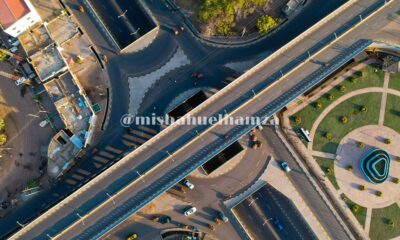
 Opinion4 years ago
Opinion4 years agoOn The Kano Flyovers And Public Perception
-
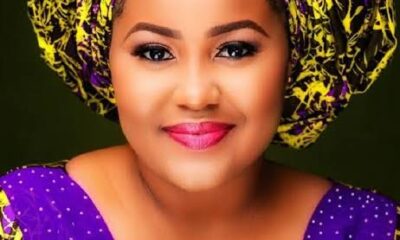
 Features4 years ago
Features4 years agoHow I Became A Multimillionaire In Nigeria – Hadiza Gabon
-
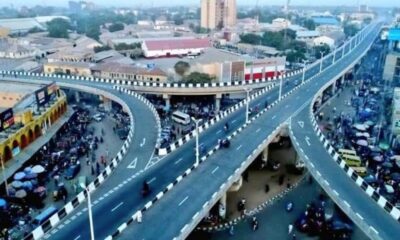
 Opinion5 years ago
Opinion5 years agoKano As future Headquarters Of Poverty In Nigeria
-
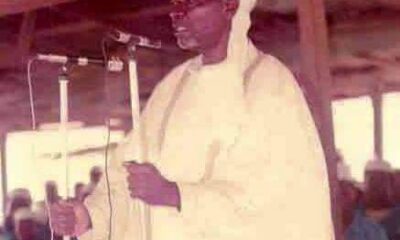
 History5 years ago
History5 years agoSheikh Adam Abdullahi Al-Ilory (1917-1992):Nigeria’s Islamic Scholar Who Wrote Over 100 Books And Journals
-
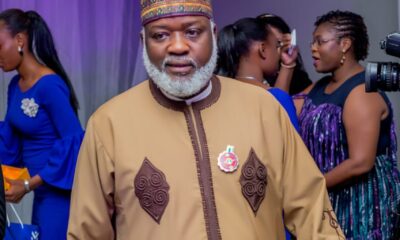
 Opinion4 years ago
Opinion4 years agoMy First Encounter with Nasiru Gawuna, the Humble Deputy Governor
-
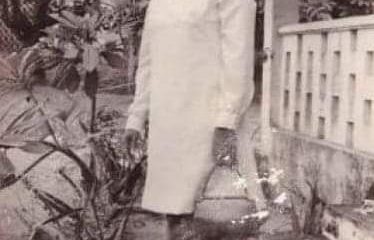
 History5 years ago
History5 years agoThe Origin Of “Mammy Market” In Army Barracks (Mammy Ochefu)
-
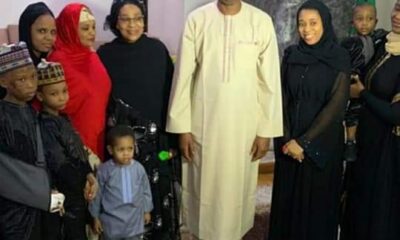
 History4 years ago
History4 years agoThe History Of Borno State Governor Professor Babagana Umara Zulum
-
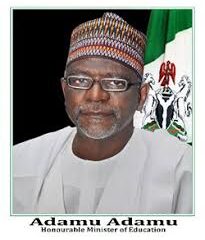
 News4 years ago
News4 years agoFederal University Of Technology Babura To Commence Academic Activities September